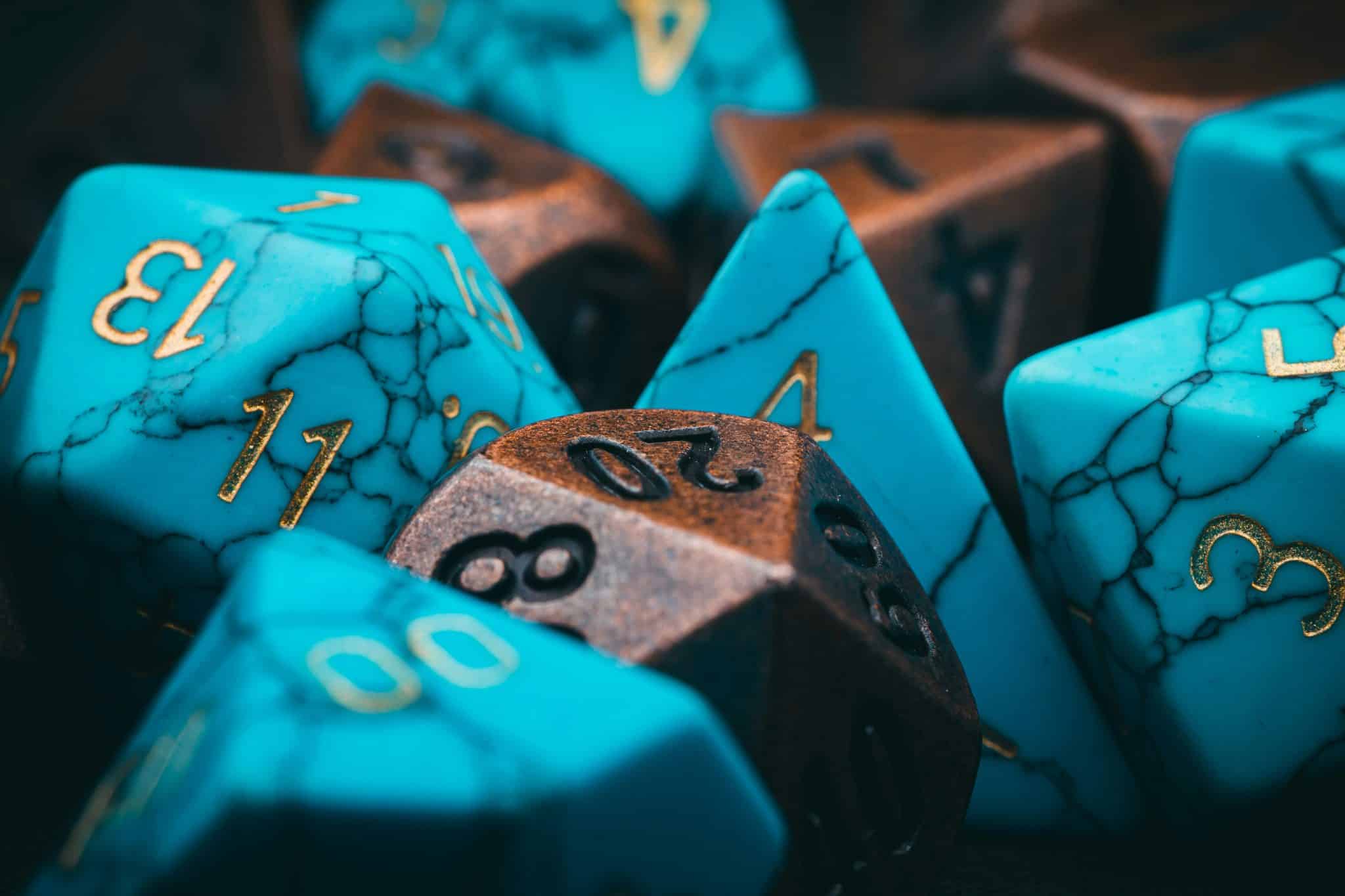However, given that my kids are younger than I was when I first delved into D&D, I knew I needed age-appropriate adventures. After some research, I discovered An Ogre and His Cake, a delightful adventure that promised a perfect starting point. I didn’t stop there; I also picked up a few more adventures from the D&D Adventure Club, known for their kid-friendly scenarios.
“You don’t stop playing because you grow old; you grow old because you stop playing.” – George Bernard Shaw
If you’re keen to introduce your kids to the enthralling world of D&D, you’re in the right place. This article aims to provide tips and tricks for creating a magical experience and some thoughtful ideas to help you get started on your family’s adventure.
Setting the Scene: Why Dungeons & Dragons is Great for Kids
Dungeons & Dragons (D&D) is more than just a game; it is a powerful educational tool and a fantastic source of entertainment. At its core, D&D encourages creativity, imagination, and storytelling. When kids create their characters, they delve into a world of make-believe where they must think on their feet, solve problems, and work as a team to overcome challenges.
One of the standout benefits of playing D&D is its impact on social skills. In a world increasingly dominated by screens, the face-to-face interaction required in D&D promotes communication, cooperation, and empathy. Players must listen to each other, negotiate roles, and make collective decisions, which are crucial life skills.

The game also supports the development of cognitive skills. Young adventurers will flex their math muscles while calculating hit points and damage and improve their reading and comprehension abilities through complex character sheets and rulebooks. Additionally, the need to navigate through various plots and subplots sharpens their critical thinking and strategic planning capabilities.
However, perhaps one of the greatest gifts D&D offers is the sense of achievement and confidence it instils. When children see their characters grow and succeed, they feel accomplished. These small victories can translate to enhanced self-esteem in real life, as they experience firsthand that dedication and effort yield success.
Moreover, D&D is a game that celebrates individuality and diversity. No two characters are alike, and the game thrives on the rich tapestry of personalities and abilities each player brings. This inclusiveness teaches respect and appreciation for differences, creating a welcoming environment for all participants.
By introducing your kids to D&D, you’re opening up a world of endless possibilities—where learning and play go hand in hand. It’s a chance for family members to bond, share laughter, and create unforgettable memories. Whether facing off against mythical creatures, solving intricate puzzles, or navigating through enchanted forests, your children will gain invaluable life skills while having incredible fun.
Selecting Age-Appropriate Adventures
When selecting adventures for younger children, finding engaging yet simple material is crucial. “An Ogre and His Cake” is an excellent starting point. This whimsical adventure combines humour and light-hearted challenges, making it perfect for beginners. The DnD Adventure Club offers a range of kid-friendly adventures designed to entertain and educate. We have been playing The Town Trilogy, and the kids have loved it.
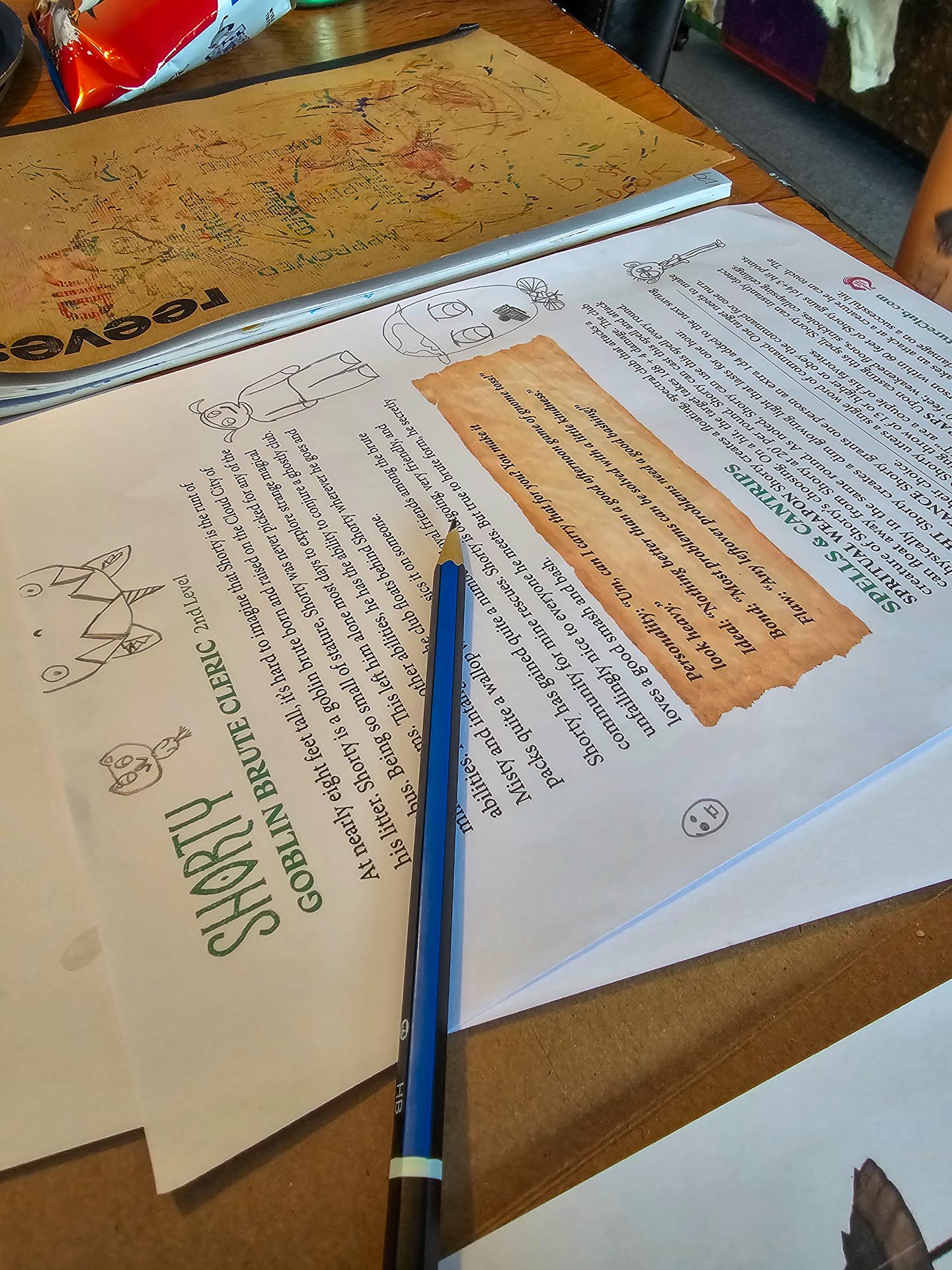
Don’t forget about “Hero Kids,” another fantastic option for younger adventurers. This game offers a fast and fun introduction to role-playing games, featuring simple combat and adventuring systems perfect for new, young players. It’s an excellent entry point that can pave the way towards more complex games as they age.
Role-Playing Basics: Teaching Kids the Fundamentals
You’ll want to begin with the simplest concepts when introducing your kids to role-playing basics. The fundamentals of D&D involve storytelling, character creation, and making choices that affect the game’s outcome. Start by explaining that Dungeons & Dragons is a storytelling game where they become the heroes of their own adventure. Emphasise the importance of imagination and creativity, as these will be their greatest tools.
Creating Characters
Begin with character creation. Explain that each player will create a character with a unique name, background, and abilities. Visual aids, such as character sheets or simple drawings, can make this process more engaging for younger children. Simplify the character creation process by focusing on key elements like race, class, and a few special abilities. Tools like Hero Kids offer streamlined options, making it easier for kids to grasp the basics. Meanwhile, D&D Adventure Club has pre-made characters ready to play.
Basic Rules of Role-Playing
Next, introduce basic role-playing rules. Explain that each character will have different skills and abilities, which they will use to solve puzzles, fight monsters, or interact with other characters. You might say, “Imagine your hero is up against a challenge. What will they do? How will they conquer this obstacle?” Encouraging them to think and act in character helps them understand the concept of role-playing.
Rolling the Dice
Rolling dice is a key part of D&D. Explain that different dice are used for different actions. Demonstrate how rolling a dice can determine success or failure in an action. For instance, you might illustrate, “If you want to climb a wall, you roll a dice to see if you succeed. A high roll means you climb up easily; a low roll might mean you must try something else.” This introduces the element of chance and teaches kids about probability.
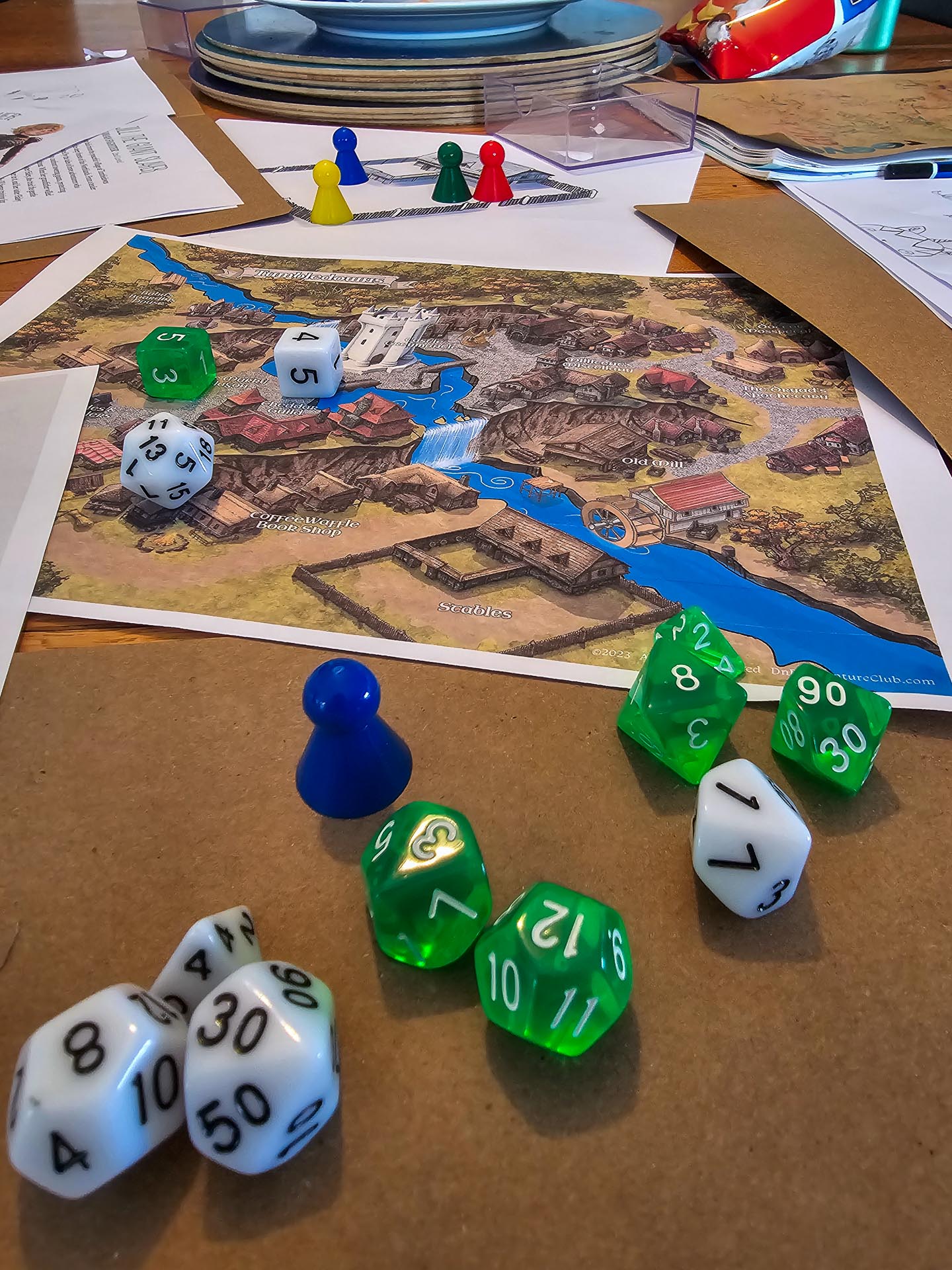
Interactive Storytelling
Lastly, focus on the interactive storytelling aspect. As the Dungeon Master, you’ll narrate the story but always allow your young players to make decisions. Avoid getting bogged down in complex rules; the goal is to keep the game moving and maintain their interest. Ask open-ended questions like, “What does your character want to do next?” or “How do you approach this problem?” to encourage participation and creativity.
Breaking down the basics and using simple language make it easy for your kids to understand and enjoy the game. Remember, the primary goal is to have fun and stimulate their imaginations.

Incorporating Educational Elements: Learning Through Play
D&D kinda has a lot of maths in it. I would happily argue that it has more maths than some of the ‘maths apps’ my kids use as reccomended by their school.
From calculating modifiers and hit points to managing inventory and counting squares on a battle grid, there are numerous opportunities for children to practice arithmetic without even realising it. Furthermore, this practical application of maths skills can make the subject more interesting and relevant to their everyday lives.
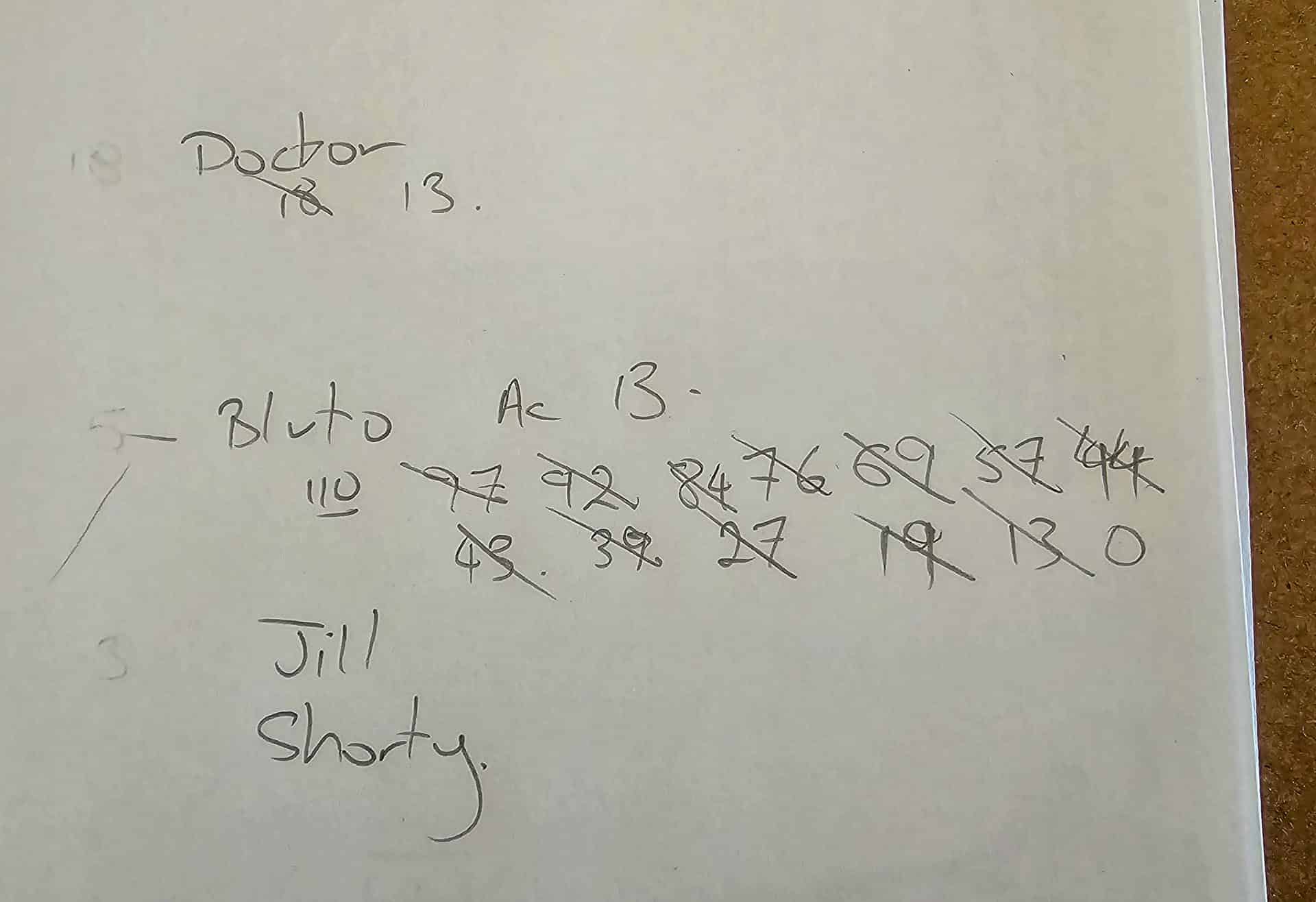
Beyond maths, Dungeons & Dragons fosters various other essential skills. Children develop their creativity and storytelling abilities as they immerse themselves in their characters’ roles. They must think critically and solve problems creatively to navigate different scenarios presented during their adventure. This combination of imaginative play and strategic thinking helps in engagingly honing their cognitive skills.
Moreover, playing D&D offers a safe, fictional environment where kids can explore the consequences of their actions. Decision-making becomes a crucial part of the game, whether choosing how to approach a tricky situation or what resources to utilise. This helps them understand that actions have results, fostering a sense of responsibility and foresight.
Let’s not forget the social benefits. Working together to overcome obstacles enhances teamwork and communication skills. Kids learn to listen to each other, share ideas, and collaborate towards common goals, fostering a sense of camaraderie and cooperation. And, because it involves face-to-face interaction, it’s a wonderful break from screen time, enriching their interpersonal skills.
So, while the game has its fair share of spells, dragons, and mythical creatures, its real magic lies in the invaluable educational and developmental benefits it offers.
Tips for Being a Kid-Friendly Dungeon Master
Keeping Sessions Short and Sweet
Keeping your game sessions short and sweet is essential, especially for younger players. Children, particularly those aged 6 through 11, often have shorter attention spans, so consider running shorter sessions, perhaps 45 minutes to an hour. This approach ensures the kids remain engaged and eager for the next adventure.
Start with bite-sized adventures with clear objectives that can be completed within a single session. This method helps maintain their focus and gives them a sense of accomplishment. For example, the adventure “An Ogre and His Cake” is designed to be concise yet fun, making it perfect for younger kids.
Another tip is to break the game into smaller segments with definitive pauses and a chance for a quick break. Use this time to let them discuss their characters or the story thus far. It helps in recapturing their attention and excitement.
Lastly, always listen to your little adventurers. If they seem restless or tired, it’s okay to wrap up early. The goal is to keep them excited about returning for more, not to make Dungeons & Dragons feel like a chore.
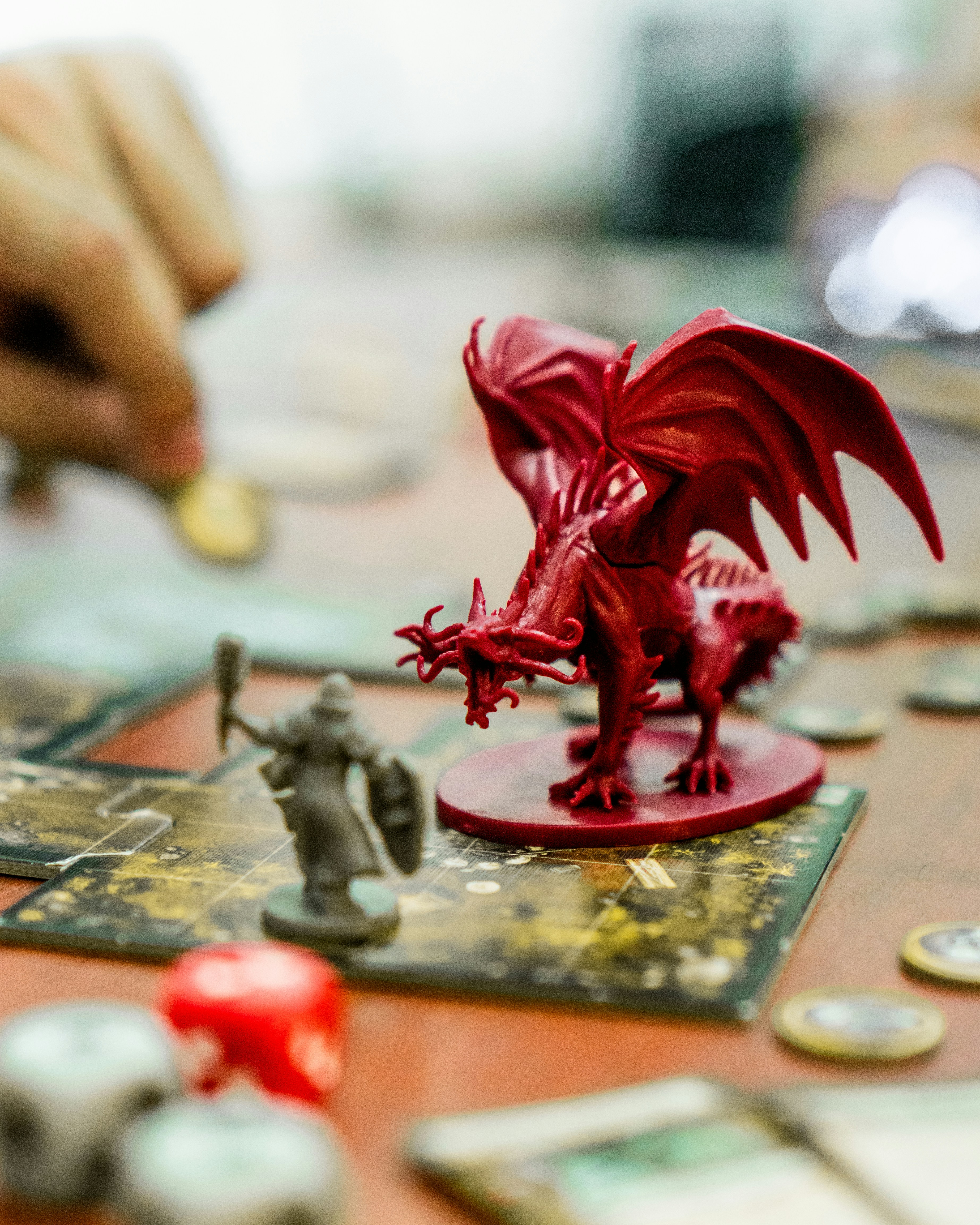
Incorporating Visual Aids and Props
While it’s very tempting (in my nature) for me to now go out and spend a lot of money on miniatures and elaborate maps, a couple of figures from one of their board games also do the trick.
Additionally, don’t underestimate the power of simple tokens or Lego figures. These can be just as effective for representing characters and monsters on a grid. Speaking of grids, you don’t need professionally printed maps either—graph paper or a hand-drawn map can add a personal touch to your adventures. The key is to keep things imaginative and flexible.
Creating an immersive environment without breaking the bank can also be achieved through storytelling. Use vivid descriptions and sound effects to bring the game to life. A rustling of paper can mimic leaves in a forest, and a tapping pencil can resemble footsteps in a dark cave. Encourage the kids to use their senses and provide input, making the game a collaborative storytelling exercise.
Engaging the kids in the creative process doesn’t stop there. Let them draw their own characters, create their own props, or even help in map-making. This makes them feel included and fuels their excitement and investment in their characters’ journeys.
Ultimately, the magic of Dungeons & Dragons lies in the adventure and camaraderie it fosters. Whether you’re using high-end miniatures or makeshift tokens, the goal is to create memorable experiences that spark the imaginations of everyone involved.
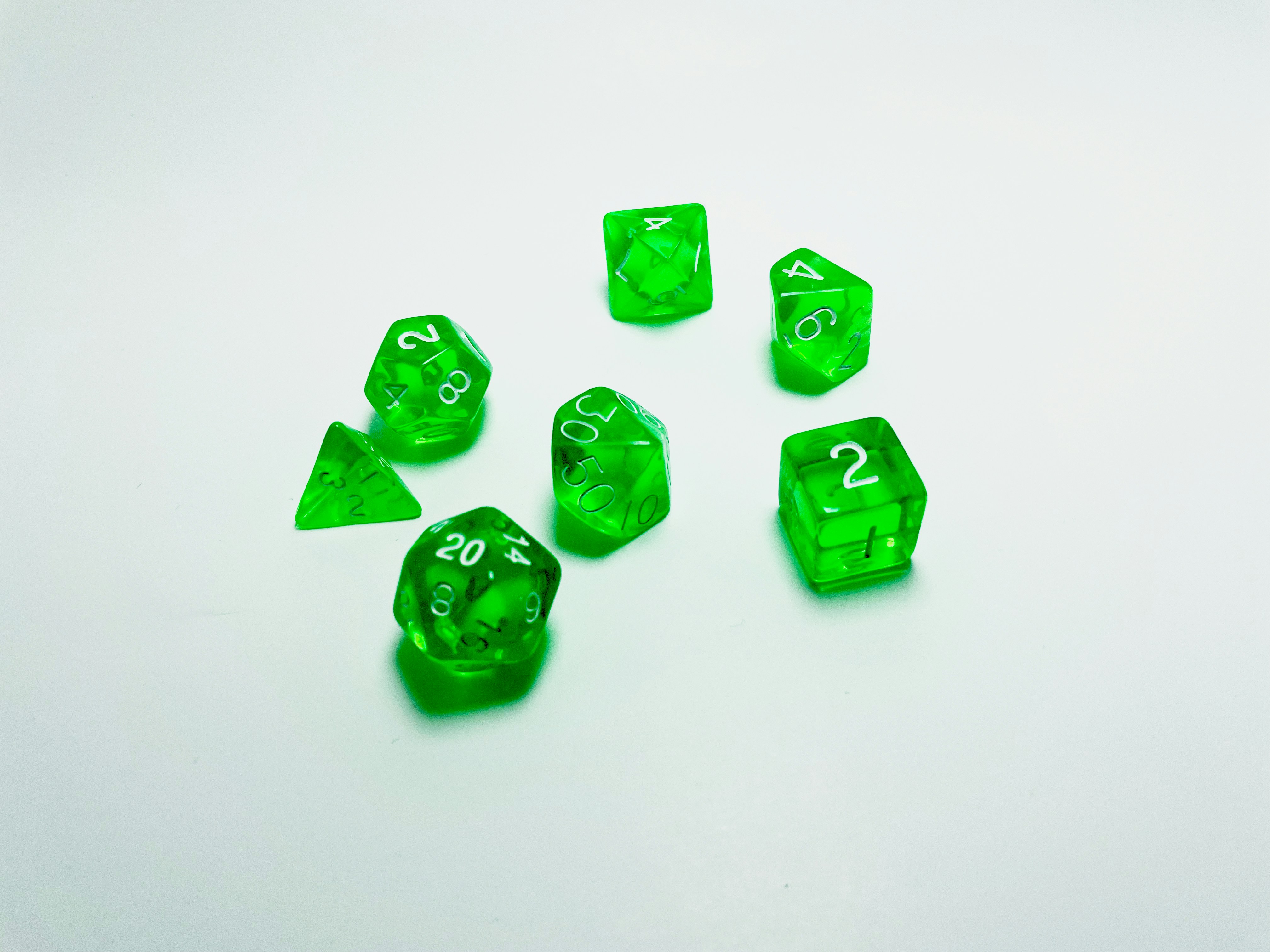
Going Digital – Apps and Screens?
I was very tempted to use the official D&D Beyond App to help the girls manage their characters – the app even lets you virtually roll dice. In addition, plenty of digital map systems out there do cool stuff like ‘fog of war’ – but – in the end – I realised – I didn’t need my kids looking at a screen any more than they already do.
Instead, I opted for a more hands-on approach. We gathered around the dining table with printed character sheets, colourful dice sets, and plenty of paper for drawing maps and character illustrations. This tactile experience reduced screen time and added a tangible element to the adventure that sparked even more creativity.
Physical items can engage the kids’ senses and make the game memorable. For example, you could use toy figures to represent characters on a hand-drawn map. This interaction helps younger children visualise the story and stay focused on the game. Besides, it provides a great opportunity for everyone to be creative, whether making small accessories for characters or crafting simple dungeon layouts.
If you need digital help without excessive screen time, consider using a digital tool only for specific, brief interactions. For example, you could utilise online dice rollers or digital character sheets on a tablet that get passed around rather than stared at continuously. Mixing digital convenience with traditional play can strike a good balance.
Encouraging Teamwork and Cooperation
One of the magical aspects of Dungeons & Dragons (D&D) is its inherent ability to foster teamwork and cooperation among players. As young adventurers navigate their quests, they learn the importance of working together and leveraging each other’s strengths. Encouraging such collaboration can be as simple as devising challenges that necessitate group effort. For instance, a puzzle that requires different skills—such as strength, intelligence, and wisdom—will have kids naturally turning to each other for solutions.
Introduce tasks where no single player can succeed alone, like lifting a heavy gate or deciphering an ancient script. Highlight the benefits of shared knowledge and collective effort. When children see their characters thriving because of teamwork, they start to appreciate and seek out the contributions of their peers. Moreover, character roles in D&D are often diverse: while one might play a sturdy warrior, another might opt for a cunning rogue or a wise wizard. Such diversity enriches the gameplay and teaches kids to value different abilities and perspectives.
You can cement these lessons by setting house rules that reward cooperative play. Simple incentives can go a long way, such as granting extra experience points for creative team solutions or providing magical items when the group achieves something together. Praise their collaborative achievements; use them as teachable moments if conflicts arise. Guide them in resolving disagreements constructively and fostering a respectful and inclusive game environment.
Ultimately, by emphasising teamwork and cooperation in your sessions, you’re creating a fun gaming experience and instilling skills and values that extend far beyond the D&D table, shaping how they interact with others in various aspects of life.
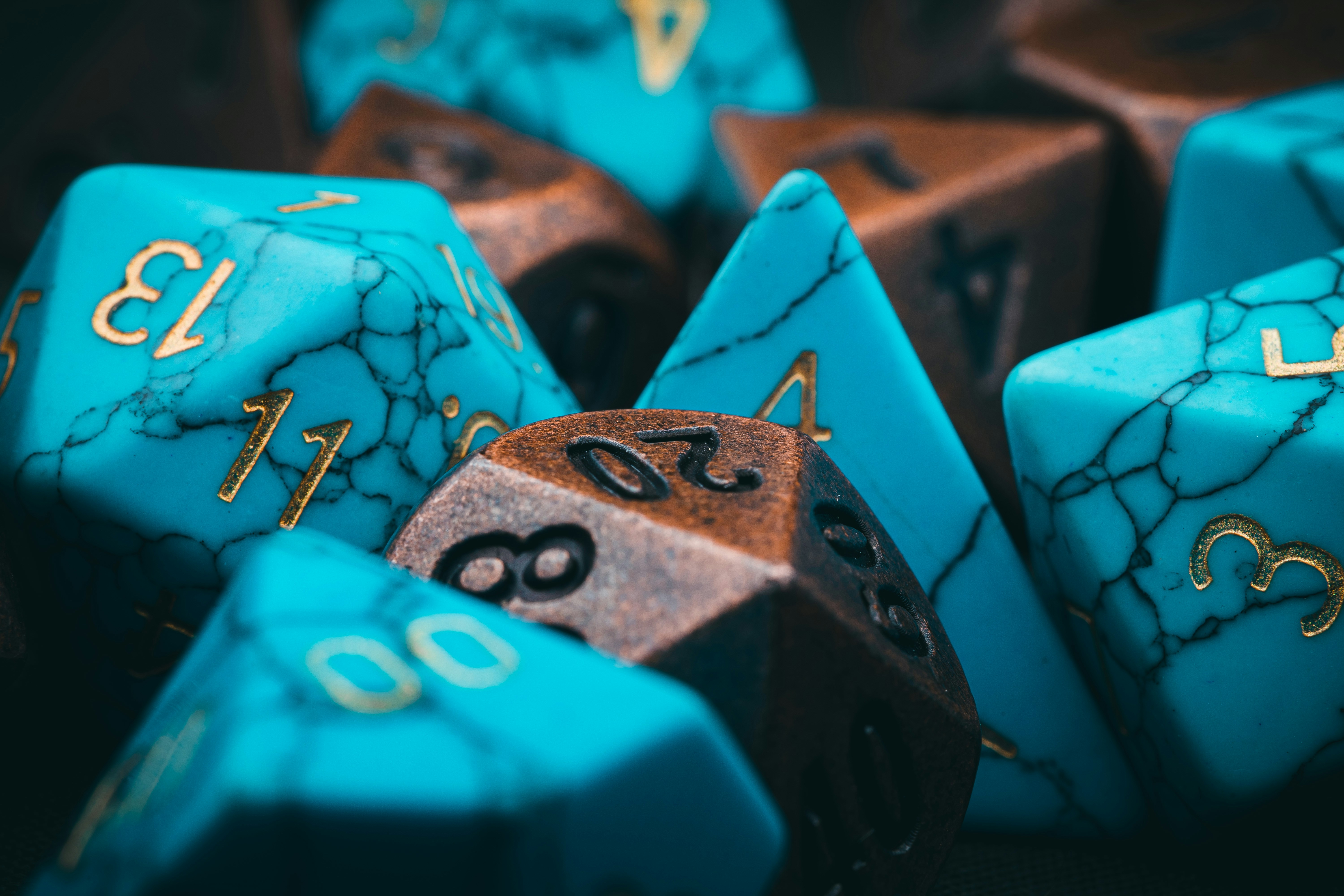
Managing In-Game Conflicts: Keeping the Adventure Fun
In-game conflicts are inevitable, but they don’t have to derail your session. Teaching young players that conflicts are a natural part of the adventure and can be resolved creatively is essential. When disputes arise, encourage the children to use their characters’ skills and abilities to find solutions. This can be a fantastic opportunity to foster problem-solving and negotiation skills.
Remind them that everyone is part of a team working towards a common goal. Emphasise the importance of taking turns and listening to each other’s ideas. One effective approach is introducing a “talking stick” or another object only the player holding it can speak. This helps to ensure that everyone gets a chance to voice their ideas without interruptions.
If you encounter recurring issues with aggressive or uncooperative behaviour, take a step back and review the game rules and etiquette with your players. Make sure they understand the importance of respect and cooperation. Sometimes, a brief timeout or a side conversation with the disruptive player can help them refocus and return to the game with a better attitude.
Finally, don’t forget to inject humour into conflict resolution. Kids often respond well to a light-hearted approach. If a disagreement arises, consider resolving it with a humorous in-game event, like the sudden appearance of a mischievous fairy who demands a dance-off to settle disputes. Keeping the atmosphere fun and engaging can make conflict resolution a positive and enjoyable part of the adventure.
Balancing Fantasy and Reality: Keeping It Light-Hearted
When introducing kids to Dungeons & Dragons, balancing fantasy and reality is essential to keep the experience enjoyable and age-appropriate. Kids have vivid imaginations, but ensuring the game is not too intense or scary is crucial. Aim for adventures that are playful and whimsical rather than dark and ominous.
Focusing on Lighthearted Themes
Choose storylines emphasising humour, friendship, and problem-solving over conflict and danger. For example, a quest to find a missing pet or solve a mysterious riddle can be just as engaging – if not more so – than a battle with a fearsome dragon. By keeping the plotlines accessible and fun, you create a safe space where kids feel comfortable expressing themselves and making mistakes.
Inviting Creativity and Silliness
Encourage your young players to embrace their creativity. Invite them to concoct wild and crazy plans to overcome challenges. Whether sneaking past a sleeping ogre by dancing quietly or convincing a troll that it’s his birthday to get past him, the key is to foster an environment where fun and imagination drive the story. Sometimes, the most outlandish ideas can make for the most memorable moments.
Avoiding Graphic Content
Be mindful of the content in your campaign. Avoid overly violent or disturbing elements. Instead, introduce challenges that can be resolved with clever thinking, teamwork, and diplomacy. Young players benefit greatly from scenarios promoting empathy, cooperation, and communication.
Tying Fantasy to Real-World Learning
D&D provides a unique opportunity to blend fantasy with real-world educational elements. Incorporate puzzles that require math or logic, historical references, and even opportunities for kids to practice reading. This helps to ground the fantastical elements in an enjoyable and beneficial context for their development.
By keeping the tone of your D&D game light-hearted and engaging, you ensure that it’s a magical experience filled with laughter and learning. After all, the ultimate goal is to make memories that your kids will cherish and look back on with fondness.

Handling Short Attention Spans: Keeping Kids Engaged
It’s no secret that kids can have shorter attention spans than adults, so keeping them engaged during a D&D session can be challenging. One effective strategy is to break up the adventure into smaller, more manageable segments. Rather than planning an epic four-hour campaign, aim for shorter sessions that last anywhere from 30 minutes to an hour. This keeps the excitement levels high and prevents the kids from feeling overwhelmed.
Another technique is to introduce frequent interactive elements. Incorporate puzzles, riddles, or mini-games that require active participation. Hands-on activities can be especially captivating. Consider using props like maps, miniature figures, or even simple craft items to build a sense of immersion. Visual aids keep the game interesting and cater to different learning styles, making the experience more inclusive for all players.
Regularly changing the pace of the game can also maintain interest. Alternate between intense combat scenes and more relaxed, story-driven moments. This dynamic flow keeps the kids on their toes and eager for what’s coming next. Don’t be afraid to throw in a plot twist or unexpected event to rekindle their curiosity.
Engage directly with each child to ensure everyone is involved. Ask specific players what their characters want to do next, or let them describe their actions in detail. Personalising the experience makes each player feel important and valued, which can significantly enhance their engagement.
Finally, embrace the unpredictability and humour that kids bring to the game. Encourage them to come up with outlandish ideas and be silly. Laughing and having fun together creates positive memories and makes kids look forward to the next session.
Snacks. Lots of snacks.
Snacks are not just a fun addition to the gaming table; they’re necessary to keep little adventurers engaged. Keeping kids fuelled with various snacks will help maintain their energy levels and keep those brains sharp for solving puzzles and defeating monsters. Opt for a mix of healthy treats and a few indulgent favourites. Think about fruit slices, cheese cubes, veggie sticks with dip, and perhaps a few pieces of chocolate or a bowl of popcorn for those high-tension moments.
Incorporating themed snacks can add another layer of immersion. Imagine serving ‘dragon scales’ (potato chips) or ‘wizard wands’ (pretzel sticks), and watch how their eyes light up with excitement. A special ‘birthday cake’ could even tie into your “An Ogre and His Cake” adventure.
Making it a Family Affair: Involving Siblings and Parents
There is still a strange amount of stigma regarding Dungeons & Dragons, so don’t be surprised if your partner looks at you sideways when they realise you played D&D in your youth.
Reassure them that Dungeons & Dragons is more than just a game; it’s an excellent tool for developing creativity, problem-solving skills, and teamwork. Many parents have shared how their kids have blossomed with improved social skills and creativity after starting D&D. It can be a wonderful shared activity that strengthens family bonds and opens up new worlds of imagination.
Take the time to explain the benefits and maybe even invite them to join a session. Who knows? They might discover a newfound love for it, too. It’s all about creating fun, educational, and memorable experiences for the entire family. And here is a sneaky little tip – a Harry Potter Conversion for D&D is available. Suddenly, things might be a bit more accessible!
Involving other family members can be a thrilling way to enhance the D&D experience for your kids and yourself. Invite siblings, parents, or grandparents to join the adventure. Doing so creates a dynamic, multi-generational game that can bring the family closer together.
To entice them, highlight the various aspects that might appeal to different family members. Some might be drawn to the storytelling and creative aspects, while others may enjoy the strategic and problem-solving components. Setting up a character creation session where everyone can craft their own unique persona can be a great icebreaker.
Moreover, incorporating familiar elements like a Harry Potter-themed campaign can make the game feel more accessible and exciting, especially for those who might be hesitant about jumping into a fantasy world they’re unfamiliar with. You’ll capture their interest and enthusiasm by linking the game to a beloved franchise.
Remember, the key is to keep it fun and light-hearted, allowing everyone the opportunity to contribute and shape the story. This shared experience makes for memorable family moments and helps develop teamwork, creativity, and critical thinking skills. So, don’t hesitate to bring more people into your D&D circle—it can only elevate the adventure!

